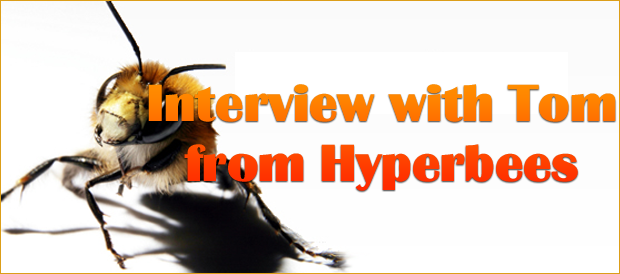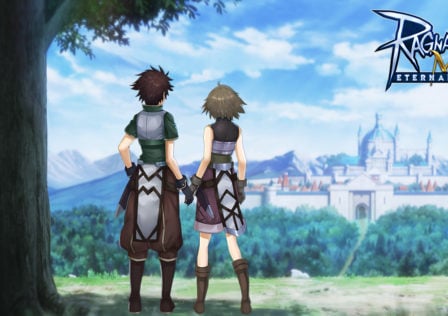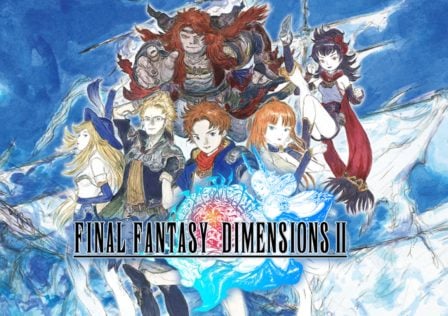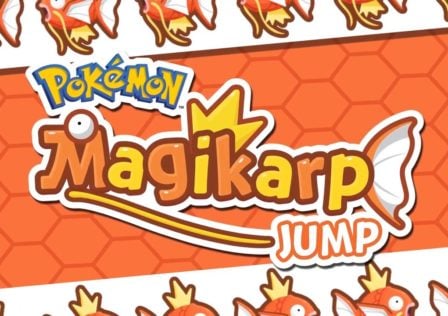Hyperbees has produced some of the more original 3D games for Android with some being major hits like SpeedX 3D and Prism3D. We got to talk to Tom and Bart of Hyperbees about their games, development challenges and what’s in store for Hyperbees in the future. So without further babbling on my part, here is Tom and Bart from Hyperbees!
1) Thanks for taking the time to answer our questions. Tell us a little about yourself, favorite gaming system, junk food, graphics program, current favorite game, etc etc.
Tom: We’re a young publishing company focusing on the Android market. We’re based in London but we operate globally, of course.We work with developers on publishing their apps and making sure they earn as much as possible money- and recognition-wise. I definitely drink too much coffee and play too much on my Milestone. As for my favorite games – from our own portfolio – Prism and Space STG, our new sci-fi real-time strategy. Other than that, I love Robo Defense; this game is close to perfection when it comes to players’ engagement. Lupis Labs did a great job there.
Bart (developer of Speedx & Prism3D): Hell, yes. It was just a hobby project which turned out to be a great success.
Tom: I was sure it would sell well, because it a very sexy game, but to be honest I was rather surprised when the sales went through the roof!
Bart: I think it’s too early to judge, it’s not nearly as widely known as Speedx, we simply need to wait and see. I think Prism is a bit more difficult than Speedx, which may impact its popularity.
Tom: I would not fear that. It’s still early days but its players’ base is steadily growing. I should probably also mention that it is aimed at a slightly different audience. It’s different from Speedx, more varied, has a level editor, infinite mode, the works.
Bart: Hardware fragmentation. Don’t get me wrong. Generally, I don’t think that fragmentation is some big problem in the Android world. Usually you do not even need to worry about that. But both Speedx and Prism are OpenGL games – and with OpenGL you need to do tests on many different handsets, since OpenGL drivers can have bugs, different GFX hardware may behave differently, and since there are so many handsets available, there is a big chance that something goes wrong on a specific device.
Tom: Despite the issues Bart has just mentioned, both Speedx and Prism deliver high-quality experience. From the publisher’s perspective, I’d add piracy, the refund policy and no Google tools supporting sales and marketing. Fortunately, there is Excel, pivot tables and third-party solutions.
Bart: Stop the spam. Currently there isn’t any discoverability for new applications since Android Market is flooded with spam apps, most of which use stolen intellectual property – which is really annoying.
Tom: I second that. We need more app discoverability built in Android Market, more control over comments and more sales-support tools.
Tom: It is a win-win-win situation – gamers have more choice as new games are being developed, developers make money and HyperBees expands
its business.
7) Can you explain a little more about what it is you do for developers in this program?
Tom: First of all I’d like to say that we are quite selective when it comes to with whom we work. Apps have to have a potential and we need to like them – there’s no point in working on something we do not really believe in. Plus, obviously, we must be able to build rapport with the developer.
About our cooperation with developers
– it starts well ahead of publishing an app: we work together on
polishing, tying up loose ends, testing and preparing a marketing
plan;
– we publish and execute the plan;
– manage cooperation with social media and overall internet exposure;
– work together on updates;
– report sales on a daily basis.
Our fee is commission-based only, it’s usually around 25% of app net price (i.e. after Google’s commission), but it varies from case to case. As you can see, we have no problem telling people honestly how and for how much we work. There is no small print, no hidden fees. And we are really glad that the HyperBees model is appreciated by both developers and smaller competitors who entered the market in the last few weeks.
Tom: We have enough scale to offer developers much more than just publishing. In the next couple of weeks we’re going to focus on two areas.
Firstly, we want to ensure that every developer benefits from the talent pool we work with. I’m talking here about knowledge sharing, etc.
Secondly, the scale enables us to improve app discovery and users’ engagement. This is obviously difficult when you’re a developer on your own, starting with just one app. Right now we’re looking at various third-party solutions we’d like to implement in these two areas.
Tom: Sure, there are 2-3 games we are working on at the moment: a new version of SameDroid, which is currently on Market as a free app, and the paid version of Soccer Multiplayer. There is also one game we are working on which, to be completely honest with you, totally freaked me out when I saw it for the first time. It needs a lot of polish but once we’re done – and if it’s marketed well – it stands a good chance of being a big hit.
10) Even though most of the major conferences are done for this year except for a couple, do you have plans to attend any next year like GDC (Game Developers Conference 2011)?
Tom: We’d like to attend GDC, most probably we will submit 2-3 games to the IGF competition so we’ll see.
Tom: Push developers and publishers to create even better games! Android is a very good gaming platform and with each month it’s getting better. And do keep on reading Droid Gamers, they will know about our new releases first!
Thanks. It’s always a great pleasure to talk to you.
Droid Gamers would like to thank both Tom and Bart again for taking the time to answer our questions. Lots to look forward to from the Hyperbees crew so keep your eyes sharp for new titles coming our way. As they said, you’ll hear about it here first! Great to see a hobby becoming successful with the Android platform.
Developer Website: Hyperbees





